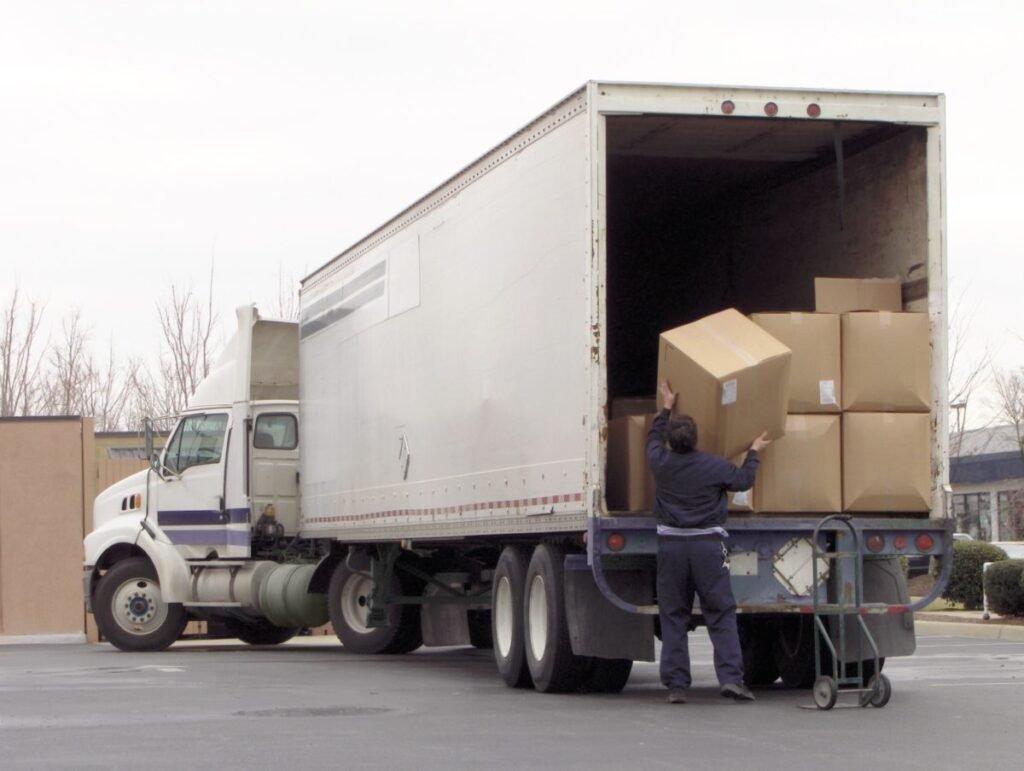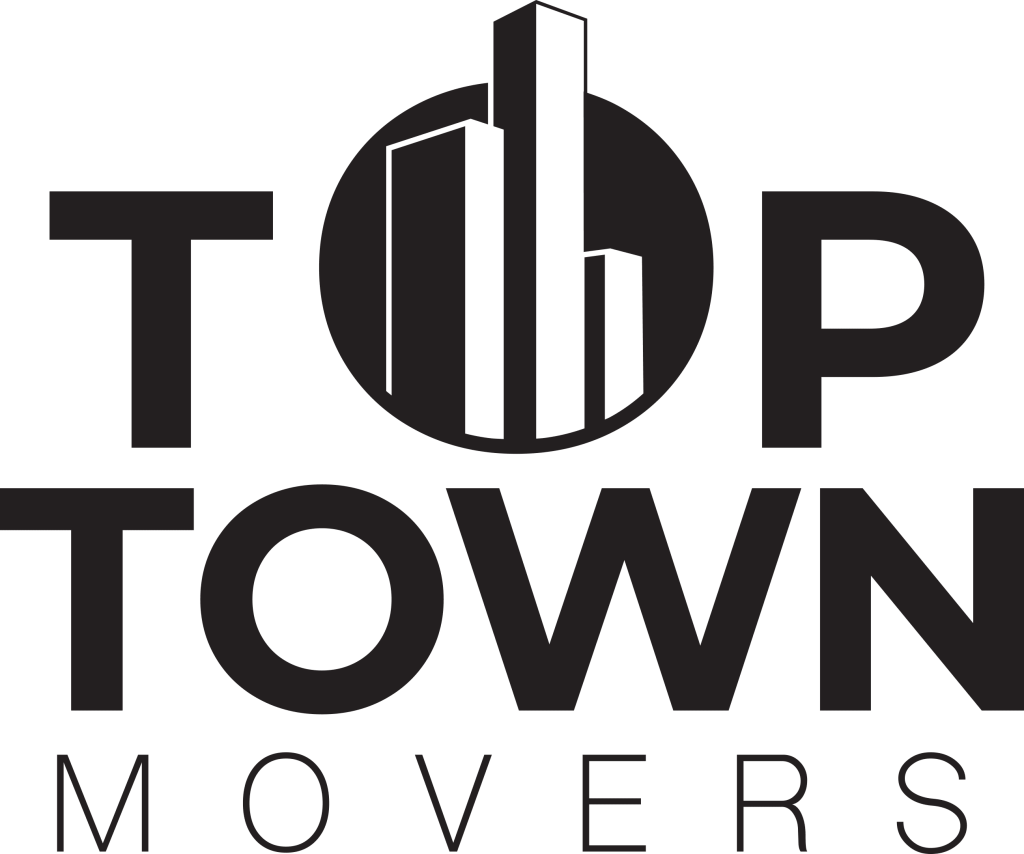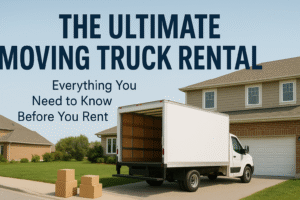Moving is an art form, a symphony of logistics, planning, and careful execution. While hiring professional movers like Top Town Movers in Ontario, serving areas like North York, can alleviate much of the burden, understanding the nuances of how your belongings are transported is invaluable. Even if you’re using our services, or if you’re tackling a DIY move with a rented truck or Trailer for Moving, knowing the principles of proper loading is crucial for the safety of your possessions and the efficiency of your relocation.
This comprehensive guide will walk you through the proper and professional techniques for loading a truck or trailer for moving, ensuring maximum space utilization, weight distribution, and, most importantly, the protection of your cherished belongings.
- Learn More >>>>Packing / Unpacking
The Foundation: Preparation is Key
Before a single box touches the truck ramp, meticulous preparation lays the groundwork for a successful load.
1. Gather Your Essential Tools and Supplies:
- Dolly/Hand Truck: Invaluable for moving heavy boxes and appliances.
- Moving Straps/Ratchet Straps: To secure items tightly against the truck walls.
- Moving Blankets/Furniture Pads: To protect furniture from scratches, dents, and tears. Top Town Movers uses high-quality pads, and you can rent or buy them.
- Shrink Wrap: Excellent for securing drawers, protecting upholstery, and bundling odd-shaped items.
- Bungee Cords: For securing smaller items or loose parts.
- Packing Tape: For sealing boxes securely.
- Marker: For labeling boxes clearly.
- Tool Kit: For disassembling and reassembling furniture.
- Gloves: For better grip and hand protection.
- Ramp (if not built-in): If your truck or trailer for moving doesn’t have a ramp, you’ll need one for heavy items.
2. Declutter and Strategize Your Inventory:
- Declutter First: Seriously, shed anything you don’t need. Less stuff means less to load, less to move, and less to unload. This reduces effort and potentially cost.
- Create an Inventory: List every box and large item. This helps with tracking and confirming everything arrived.
- Separate Essentials: Keep an “essentials box” with items you’ll need immediately (toiletries, medications, a change of clothes) in your car, not the truck.
- Personal Valuables: Keep jewelry, important documents, cash, and irreplaceable sentimental items with you. Do not load these into the truck.
- Hazardous Materials: Flammable liquids (paint, gasoline), aerosol cans, cleaning chemicals, propane tanks, and perishable foods should NOT be loaded into the truck. Dispose of or transport these separately and safely.

- Learn More >>>>Local moving
3. Disassemble and Protect Furniture:
- Disassemble: Take apart beds, dining tables, shelves, and anything else that can be broken down. Bag and label all screws, nuts, and bolts, taping them securely to the corresponding furniture piece or storing them in a designated “parts” box.
- Pad Everything: Wrap all furniture, especially corners and edges, with moving blankets. Secure them with shrink wrap or packing tape (tape on the blanket, not directly on furniture surfaces).
- Remove Drawers: For dressers and cabinets, remove the drawers if they’re heavy or unsecured. Wrap them individually. If remaining, shrink wrap them shut.
4. Pack Boxes Properly:
- Use Sturdy Boxes: Invest in quality moving boxes. Weak or flimsy boxes are prone to collapse.
- Vary Box Sizes: Use small boxes for heavy items (books, canned goods) and larger boxes for light, bulky items (linens, pillows).
- Don’t Overload: Boxes that are too heavy are difficult to lift and can break.
- Fill Gaps: Use packing paper, towels, or crumpled newspaper to fill empty spaces within boxes. This prevents items from shifting and breaking.
- Label Clearly: Mark each box with its designated room and a brief description of its contents. Indicate “FRAGILE” on delicate boxes and “THIS SIDE UP” where necessary.
- Learn More >>>>moving and packing company vaughan
The Art of Loading: The Principles of Weight Distribution and Protection
The goal is to create a tightly packed, stable load that distributes weight evenly across the truck or trailer for moving. This prevents shifting during transit, which can lead to damage.
Principle 1: Heavy and Long First – The Base Layer
The heaviest and longest items form the base of your load, resting directly on the floor of the truck.
- Appliances: Refrigerator, washer, dryer, oven. These should be loaded first, typically against the back wall (closest to the cab) if the truck is deep enough, or along one side. Use a dolly.
- Pro Tip: For fridges and freezers, remove shelves and trays, tape doors shut, and consider cleaning and drying them completely beforehand.
- Furniture (Heavy): Dressers, chests of drawers, entertainment centers, heavy tables.
- Long Items: Mattresses (stand on end against the walls), box springs, table tops, bed frames, sofas.
- Stand Them Up: Wherever possible, stand mattresses, box springs, and sofas on their ends along the truck walls. This saves floor space and allows you to build around them.
- Protect Edges: Place moving blankets between items and the truck walls.
Principle 2: Distribute Weight Evenly
- Side-to-Side Balance: Load heavy items on both sides of the truck to prevent it from leaning. Do not concentrate all the heaviest items on one side.
- Front-to-Back Balance: Avoid putting too much weight on the very back or very front. Aim for even distribution. For a trailer for moving, this is especially critical to prevent fishtailing.
- Trailer Specific: For a trailer for moving, aim for about 60% of the weight to be in the front half of the trailer, over the axle, and 40% in the rear. Too much weight in the back can cause severe sway.
- Learn More >>>>movers and packers in aurora
Principle 3: Build Vertically and Create a Tight Puzzle
Think of your truck as a giant Tetris game. The tighter the fit, the less shifting will occur.
- Walls of Boxes: Create solid walls of boxes from floor to ceiling. This maximizes space and provides stability. Place the heaviest boxes on the bottom, with lighter boxes on top.
- Use Every Nook and Cranny: Fill empty spaces with smaller, odd-shaped items, soft goods, or pillows.
- Inside Appliances: Put boxes of light items (like linens or plastic containers) inside washing machines, dryers, or even empty dressers (if drawers are secured).
- Under Tables: Place boxes or soft items under dining tables (if legs are removed).
- Mattresses/Box Springs: Can be used as a “wall” or separator, placed vertically against other items.
- Sofas: Place sofas either on their ends or upright against a wall. Protect arms and corners heavily.
- Mirrors/Artwork: Pack these in specialty boxes or wrap them meticulously with moving blankets and cardboard. Stand them on end between mattresses or against a strong, flat surface, never laid flat. Mark them very clearly.
Principle 4: Secure Everything
Once items are in place, they must be secured to prevent movement during transit.
- Strapping: Use moving straps or ratchet straps to cinch large items and stacks of boxes securely to the truck’s tie-down points.
- Layer by Layer: As you build up layers, consider strapping down sections. This way, if the top layer shifts, it doesn’t destabilize the entire load.
- Use the Walls: The interior walls of the truck are equipped with tie-down points. Use them!
- Bungee Cords: Good for lighter items that might shift.
- Furniture Pads as Cushioning: Use extra furniture pads or blankets to fill any remaining gaps or to create a buffer between delicate items.
- Prevent Door Sag: Don’t load items right up against the roll-up door. Leave a small gap and consider using a long piece of wood or a sturdy box strapped across to prevent items from pushing against the door during transit.

- Learn More >>>>moving services greater toronto area
Loading Sequence (General Guideline):
- Heavy Appliances & Largest Furniture: Position against the back wall (cab side) or along the longest side. Distribute weight evenly.
- Mattresses & Box Springs: Stand on end against the walls, creating a protective layer.
- Heavy Boxes: Start building walls of heavy boxes on the floor, working your way up.
- Disassembled Furniture Pieces: Place bed frames, table tops, etc., flat or on edge, secured.
- Sofas & Upholstered Furniture: Place on end or upright, heavily padded.
- Medium-Sized Boxes: Continue building walls.
- Odd-Shaped Items: Fill gaps with things like lamps (with shades removed and packed separately), vacuum cleaners, bicycles (remove pedals, turn handlebars), lawnmowers (drain gas/oil).
- Mirrors & Artwork: Place securely between mattresses or flat, strong furniture, or in specialty boxes, standing upright.
- Lighter Boxes: Place these on top of the heavier layers, filling all remaining vertical space.
- Last-Minute Items: Cleaning supplies, brooms, essential tool kit. These should be accessible near the door if possible.
Post-Loading Checks:
- Walk Around the Load: Visually inspect for any loose items, precarious stacks, or uneven weight distribution.
- Test the Straps: Give all straps a good tug to ensure they are tight and secure.
- Check Clearance: Ensure there’s enough clearance for the roll-up door to close properly without crushing items.
- Drive Slowly at First: For the first few kilometers/miles, drive slowly and listen for any shifting. If you hear significant movement, pull over safely and re-secure the load.
- Learn More >>>>king moving canada inc
Specific Considerations for a Trailer for Moving:
A trailer for moving behaves differently than a truck, especially regarding weight distribution.
- Tongue Weight: This is the downward force exerted by the trailer’s tongue on the hitch of the towing vehicle. Too little tongue weight (too much weight in the back of the trailer) causes fishtailing. Too much tongue weight (too much weight in the front) can overload the towing vehicle’s hitch and suspension. Aim for 10-15% of the total trailer weight as tongue weight.
- Axle Placement: Load the heaviest items directly over or slightly in front of the trailer’s axle(s).
- Secure from All Sides: Trailers, being smaller, require even more diligent strapping from all angles to prevent side-to-side and front-to-back movement.
- Know Your Limits: Never exceed the Gross Vehicle Weight Rating (GVWR) of the trailer or the towing capacity of your vehicle.
When to Call the Professionals: Top Town Movers in Ontario
While understanding these principles is empowering, the reality of loading a truck or trailer for moving can be incredibly physically demanding and complex, especially with large, fragile, or numerous items. This is precisely where the expertise of professional movers shines.
At Top Town Movers, serving North York and all of Ontario, we bring:
- Experienced Crews: Our teams are highly trained in the art and science of proper packing, loading, and securing belongings for transport.
- Specialized Equipment: We have the right dollies, straps, pads, and vehicles to handle any item, no matter how heavy or awkward.
- Insurance and Protection: We offer valuation coverage options to protect your belongings against unforeseen circumstances during transit.
- Efficiency and Speed: We can load a truck far more quickly and safely than most individuals, saving you time and stress.
- Peace of Mind: Knowing your possessions are in capable hands allows you to focus on other aspects of your move.
- Learn More >>>>top moving companies in ontario
Whether you’re doing it yourself or entrusting your move to us, mastering the principles of how to properly load a truck or trailer for moving is a critical skill for any successful relocation. By following these guidelines, you’ll significantly increase the chances of your belongings arriving safely and intact, ready for their new home in Ontario.

































